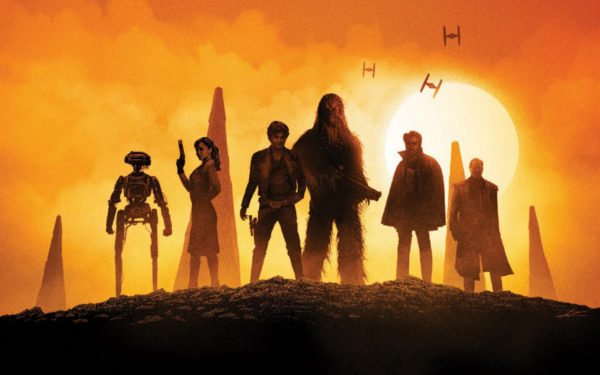Tom Jolliffe looks at Disney’s dominance at the cinemas…

You know that castle? The Disney Castle. We all know it. How about that Mouse lad and his lady friend? Sure. We know them. Right now Disney is on a high. Why so? Well it’s because in the past decade or so they’ve become an all consuming force.
Built on their own placing as one of cinemas behemoths with a long lasting and huge legacy of money making films, Disney has also bought a number of franchises, companies and studios. What films make the money right now? Well you’ve got the Marvel films of course. They all make serious bank. The MCU is a Disney subsidiary. What else? Star Wars. Lucasfilm is now owned by Disney. Anything else? Oh yeah, Pixar. Every year these companies, all under the Disney umbrella now, appear to own the box office. This isn’t purely because they are part of Disney. This is because the head honchos at the magic castle aren’t mugs. There are reasons they’ve invested in these companies.
A lot is being said right now about Solo’s ‘disappointing’ grosses. Under normal circumstances you’d look at the money it’s earned in two weeks and your eyes would pop out of your skull, but this isn’t normal circumstance. This is a world where the barometer of success in these huge tentpole movies is measured in billions, not millions. Disney as a whole is worth approximately $150 billion. They are all consuming. They certainly won’t lose sleep over Solo but they may have to reconsider the bar setting for success.
There are obviously arguments for and against Disney’s market dominance. Money going into the box office coffers is good. If there’s an overall dip it effects subsequent film production and the huge success per multiplex of the tentpole films will often allow a cinema to home smaller films that of their own accord are not economically viable. This isn’t always the case of course. Some smaller films surprise and make all kinds of bank by themselves (Get Out). However, if I look at my local cinebobs today, the screenings are predominantly engulfed with showings of Avengers: Infinity War, Solo and Deadpool 2. As far as more independent fare, or ‘high brow’ there’s almost no choice (yesterday had a welcome one off showing of 2001: A Space Odyssey). So whilst these big films may open one door for a less mainstream film, they also ingest the remaining 4-10 screens in your local cinema.
The trouble is you’ll see a great looking film on the horizon but have trouble seeing it. Leave No Trace is one that piques my interest. It’s not heavily marketed. It’s likely to be a small release in the US and most definitely in the UK. If it appears for longer than a week (if at all) at my local cinemas, I’ll be surprised. You could have the best film in the world, but unless audiences are aware, it’ll go by largely unnoticed. With the big blockbusters you get trailer time, TV time, merchandise tie ins, perpetual star hob-nobbing in chat shows etc. To do all that, of course, you need the Disney marketing budget level. You also need audience demand and debate is rife as to whether audiences are merely taking the big meals fed to them (even if they’re nutritionally empty a lot of the time)or whether they genuinely long for more meaningful fare. Lets face it, we’ve all done it, we’ve all gone to the cinema for pure escapism. Personally I’d like more choice at the multiplex as far as indie cinema and challenging cinema, but I enjoy escapist fare too. That said I look at the listings sometimes and everything seems aimed at the 3-21 age bracket, and little else.

This is the yin and yang of positive and negative influence converging. Whilst cinema runs off the proceeds of the top 10 biggest films of the year, and those films seep off residues which can help out the smaller films, there’s still not enough money being invested into new, fresh, diverse and challenging cinema. We praise films like Get Out for being inclusive but the truth is, it’s been made an example of because it hit a chord and made a lot of money. The trouble is, Get Out is a rarity. People aren’t bankrolling enough films from ethnically diverse writers/directors. It’s improving, undoubtedly, and the success of Black Panther will no doubt help in introducing more diversity to the mainstream movies. Disney outwardly seems to champion these pushes, but they’ve been guilty in recent years of ‘white-washing.’ Much work is to be done, but as heads of the Hollywood table, they set trends and others follow.
It’s a blessing and a curse to have one major studio in such dominance. They rarely misfire (see the Disney live action films like A Wrinkle in Time or Tomorrowland) and the grosses of their subsidiaries like Marvel or their own animated projects tend to cushion the blow. Here’s the thing – if Disney, Marvel and Pixar are hugely successful, it suggests winning formulas. Certainly the MCU films have plenty of commonality. Many of the films sort of blend into one. The slightly jokey, irreverent vibe that counters the world ending and destructive set pieces keeps the films fairly light and zippy even in the darker moments where they can break up a dramaitic moment with a wry throwaway. It works for the universe set out in not just the original source material, but the world which was started by Iron Man’s first outing. A lot of blockbusters since have followed suit.
…Click below to continue on to the second page…













